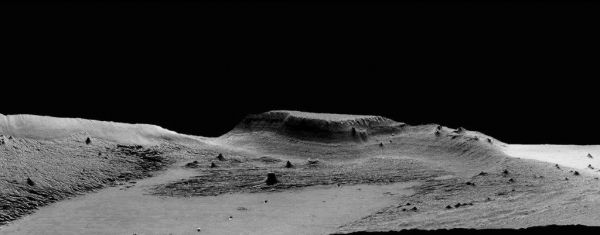Explosive volcanic eruptions that shot jets of hot ash, rock and gas skyward are the likely source of a mysterious Martian rock formation, a new study finds. The new finding could add to scientists’ understanding of Mars’s interior and its past potential for habitability, according to the study’s authors.
The Medusae Fossae Formation is a massive, unusual deposit of soft rock near Mars’s equator, with undulating hills and abrupt mesas. Scientists first observed the Medusae Fossae with NASA’s Mariner spacecraft in the 1960s but were perplexed as to how it formed.
Now, new research suggests the formation was deposited during explosive volcanic eruptions on the Red Planet more than 3 billion years ago. The formation is about one-fifth as large as the continental United States and 100 times more massive than the largest explosive volcanic deposit on Earth, making it the largest known explosive volcanic deposit in the solar system, according to the study’s authors.
“This is a massive deposit, not only on a Martian scale, but also in terms of the solar system, because we do not know of any other deposit that is like this,” said Lujendra Ojha, a planetary scientist at Johns Hopkins University in Baltimore and lead author of the new study published in the Journal of Geophysical Research: Planets, a journal of the American Geophysical Union.
Read more at American Geophysical Union
Image: An isolated hill in the Medusae Fossae Formation. The effect of wind erosion on this hill is evident by its streamlined shape. (Credit: High Resolution Stereo Camera/European Space Agency)


